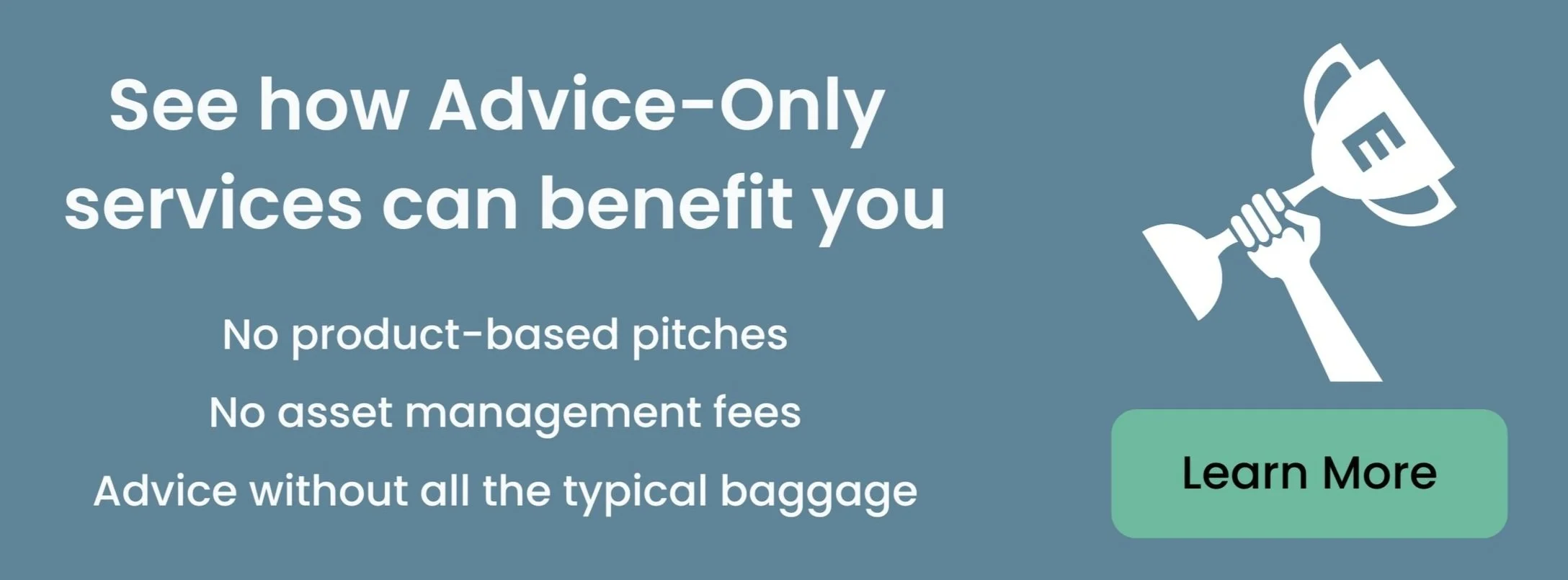When Exercising ISOs Works Well and When It Doesn’t
Incentive stock options (ISOs) provide you with a unique opportunity to grow your wealth potentially avoiding a large tax burden. They sound easy to capitalize on, but the decision to exercise ISOs is anything but easy.
The purpose of this article is to provide you with examples in which exercising ISOs can work well as well as when exercising ISOs can work out poorly.
We hope these examples should give you a better sense of how to make the most of your ISOs by helping you identify what situation you might be in.
This article is not a deep-dive into the taxes involved with ISOs and does not cover the basics of ISOs. We’ve written other articles addressing ISO basics and when you should exercise ISOs.
When Exercising ISOs Works Well
Example #1 - Exercise Before Valuations Go Up
This example seems obvious, but if you can exercise before valuations go up, it’s great for several reasons (some of which you may not have considered before).
Your exercise cost will be cheap. If valuations haven’t risen a whole lot, your exercise price should still be really affordable. This means that you won’t be out a lot of cash to exercise your ISOs.
The spread of your options will be minimal. Depending on how long it’s been since you were granted ISOs, if there haven’t been many updates to the company valuation, the chances are that the spread of your ISOs is still pretty low.
You start the clock on a qualified disposition of your ISOs. In our ISO Basics article we discuss in greater detail what a qualified disposition of ISOs is, but to get the best tax treatment on ISOs, you have to wait to sell your ISOs two years from your grant date and one year from exercise. The sooner you exercise, the sooner you can meet the two-years-from-grant-date requirement.
You potentially start the clock on QSBS eligible shares. This is more common with early start-ups, but if you eventually sell QSBS eligible shares, you can exclude up to $10M worth of capital gains. There are numerous rules regarding QSBS shares that we won’t get into here, but if you don’t exercise ISOs, you don’t technically own company stock yet. By exercising ISOs of a company that still qualifies as a QSBS company, you increase your odds of one day excluding millions of dollars in capital gains (something you’ll obviously want to discuss further with a CPA.)
As a general rule, exercising soon is what leads to the largest gains and best tax treatment, but it isn’t the only successful strategy to make the most of your ISOs. Not everyone wants to exercise ASAP and that’s okay, but you should at least weigh the pros and cons before deciding to hold off.
Example #2 - Exercise Small Annually, Win Big All at Once
Another strategy we’ve seen work out well is exercising a small amount annually in hopes you can win big later. This is probably the most common successful strategy we see and it’s one of our favorites. Here are 4 reasons why this strategy is a good one to consider:
Exercising annually rather than all at once can help reduce or eliminate the taxes you’ll owe from getting into AMT. This strategy is identical to the exercise-up-to-AMT strategy many people talk about.
You can do a 1-2 punch of this strategy towards the end of the given year by exercising ISOs in December and then exercising again in January. This spreads your AMT between the two tax years, and helps reduce your AMT tax exposure.
It helps you get a better feel about the direction the company is heading. Since you’ll be exercising over multiple years, you should be able to get a sense of whether an IPO is in the future or not.
Exercising a small amount every year is easier on your cash flow and doesn’t expose you to as much financial risk.
This is a great strategy for people who are in the middle of the risk/reward spectrum. Exercising annually allows you to more easily adjust your strategy based on what’s going on in your life and within the company.
Example #3 - Wait, Wait, Exercise, IPO, Sell
This exercise strategy is a bit more situational, but we’ve seen many clients use it successfully. The goal of this strategy is to exercise your ISOs right before you know an IPO is going to be announced.
A common strategy is to exercise 6 months before the IPO so that you can sell your shares after a 6-month lock-up following the IPO for long-term capital gains.
Of course, there’s always some uncertainty whether a particular private company will IPO and this uncertainty can make it hard to know whether you’ll ever be able to sell company stock acquired from ISOs.
We recommend waiting until there’s a fairly reliable rumor that an IPO will be coming in the next year or waiting until the company actually files for an IPO.
Once you have some clarity on an IPO date, you can exercise what you feel comfortable with, and then sell after the IPO and after you’ve met the holding requirements for a qualified disposition.
When Exercising ISOs Doesn’t Work Well
We’ve described ISO exercise strategies that we’ve seen work out well for people. Now it’s time to discuss some examples that have not worked out well.
Example #1 - Exercise without knowing the tax consequences
If we could scream just one piece of advice from the rooftop it would be to examine potential tax consequences before exercising your ISOs. Heeding this one bit of advice would save people an enormous amount of heartache, stress, and taxes.
Exercising ISOs without knowing the potential tax consequences is a very risky move. One of the greatest perks of exercising ISOs in an informed way is that when you exercise wisely (e.g., examine potential tax liability ahead of time), you can usually avoid owing taxes upon exercise.
However, it’s critical to be aware that if you exercise a lot of ISOs and/or have a large spread on each exercise, you’ll eventually receive so much economic benefit that it pushes you into Alternative Minimum Tax (AMT). You need to know this in advance so you can prepare yourself.
AMT is a separate tax calculation that runs alongside your usual tax calculations. Whichever of the two calculations results in a higher tax is the tax you’ll pay. You normally would never notice this calculation because there aren’t that many things that can cause your AMT tax calculation to be higher than your normal tax calculation. Exercising ISOs is one of those things that affects your AMT tax calculation.
We’ve seen way too many people exercise ISOs without first evaluating the potential tax consequences. They are shocked when they find themselves owing several thousand dollars (or several hundred thousands of dollars) in taxes. Please do not allow this to happen to you. Do your homework ahead of time. Consult with a CPA. Do the calculations. And go into your ISO exercise with a clear understanding of the potential tax consequences.
Example #2 - Exercise and Incur a Large Tax Bill Right Before IPO
Exercising ISOs right before an IPO can work out very well (like we’ve already mentioned). Or it can work out terribly.
If you exercise right before an IPO and incur a large tax bill, you’ll likely be at the mercy of your company’s stock price following the IPO. Companies which IPO-ed in 2021 and 2022 experienced considerable ups and downs in stock performance and it’s extremely difficult to predict how any individual company will perform after IPO.
You don’t want to rely on your company’s stock price doing well in order for you to pay the taxes you owe.
Example #3 - Exercise and Incur Tax During the Lock-up
The next scenario that we’ve seen work out poorly for people is exercising post-IPO after the price goes up significantly. We’ve seen this happen with various companies, but the pattern usually goes something like this:
An employee receives a grant of ISOs a couple years before IPO.
After the IPO, the company stock doubles or triples and the employee regrets not having exercised his/her ISOs previously.
At this point, the employee thinks it’s a good idea to exercise the ISOs so that everything can be treated as capital gains eventually. He/she decide to exercise everything.
Since the option spread is now very large, it pushes the employee into owing AMT.
Since the employee is still in the lock-up, no company shares can be sold until 6 months after the IPO date.
The company price following two earnings calls, doesn’t meet the expectations right after the IPO and the stock price plummets before the lock-up period expires.
The lock-up finally expires and the employee now has to make a decision to either (1) disqualify the ISO exercise and sell to cover the taxes owed or (2) come out of pocket to pay the AMT tax that’s owed based on the higher value from the ISO exercise.
In this situation, you can lose all control over your ISOs. You can be forced to sell when you don’t want to and you may be forced to pay taxes on unnecessary tax liability that you unwittingly created for yourself.
Final Thoughts on When Exercising ISOs Works Well and When it Doesn’t
The great advantage of owning ISOs is that it can put you in control of the taxation of your company equity. When executed properly, exercising ISOs can create opportunities for tax savings and greater financial independence than other forms of equity compensation.
Although you probably won’t be able to perfectly optimize all of your ISOs all the time, we hope that you’ve learned from the examples we’ve shared. The biggest take-away here is that you don’t want to put yourself in a difficult financial decision because you weren’t informed and/or aware.
We’re happy to help you build a game plan for managing your equity. Please reach out to us with any questions you might have at team@equityftw.com.


